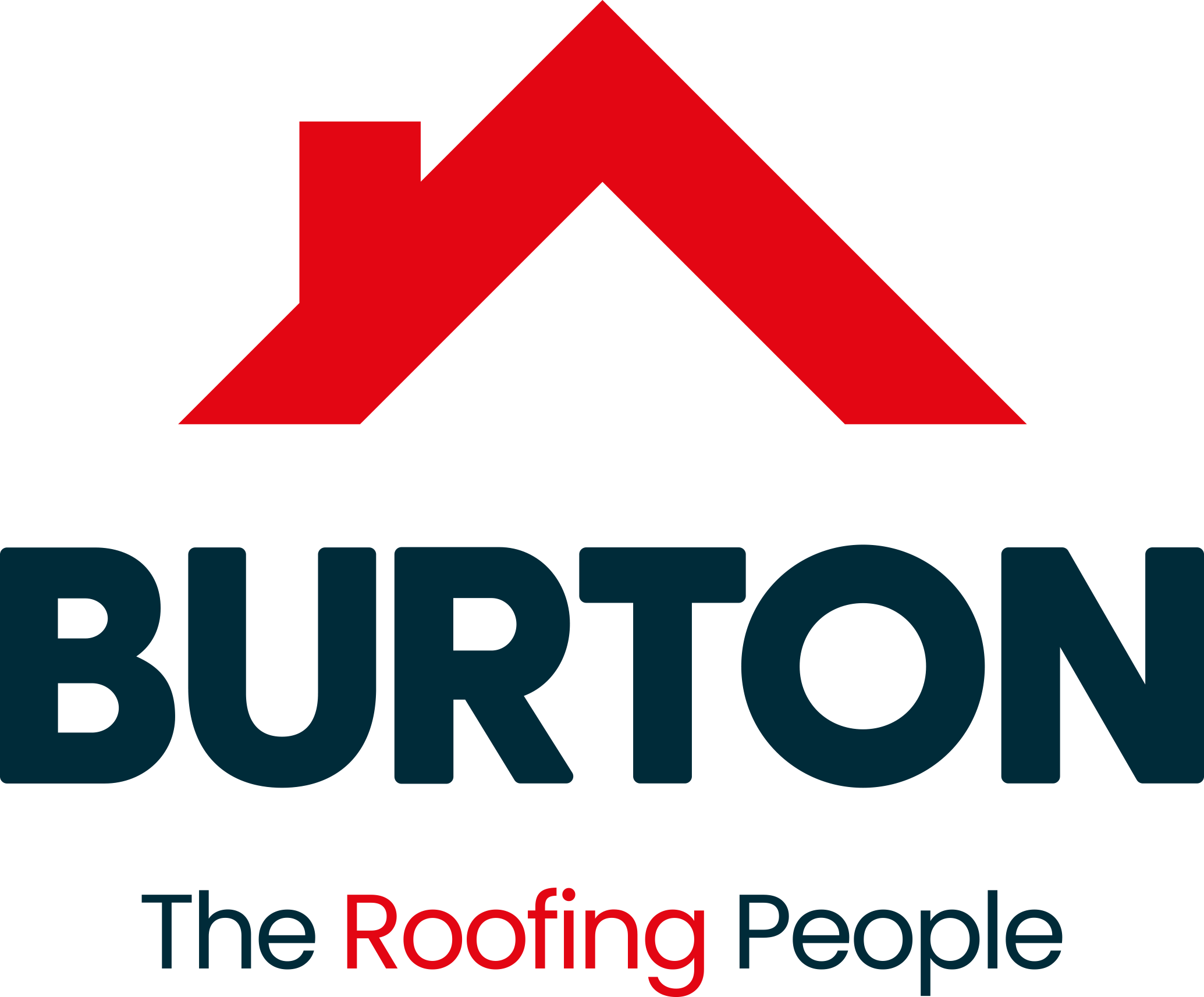G R Regan & Son Lts are 'Hooked' on CUPA Roof Slate!
G R Regan Roofing are 'Hooked' on our CUPA Roof Slate!
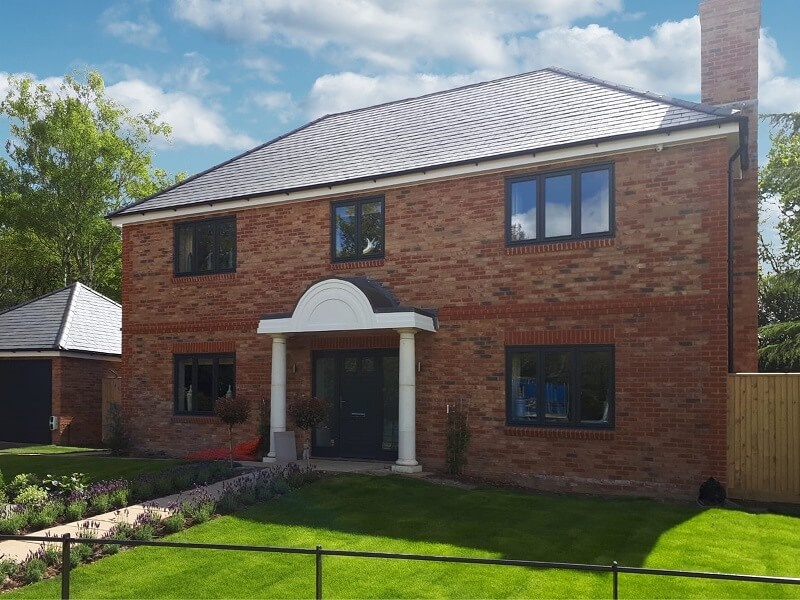
Cupa H18s roof slate was chosen for two luxury homes at Stacklands Retreat, West Kingsdown, Kent – G R Regan & Son Ltd's first job in what is now on-going work for Brookworth Homes.
G R Regan Roofing has been in business for 30 years and has 55 employees performing all types of roofing in and around Kent. Guy Regan has been using our new Sevenoaks depot for years, and he’s known Branch Manager John for 25! He tells us that the acquisition by BRM has resulted in no change to the “good service” the Sevenoaks branch provides and explains that we are “more reliable than the competition”.
The work took “two weeks to do and was very straight forward apart from some problems with the site carpentry work –there was a bump in the rafters which we got round by packing out the battens”. BRM supplied the battens, felt, slates and hook fixings.
Getting hooked
Hooking slates is a very common practice in France and Belgium. Their roofs are traditionally steeper.
Hook fixing offers greater resistance to wind lift as the hook secures the tail of the slate and locks them together more securely. The method is recommended for parts of the UK where the roof’s exposure level is considered severe, any area within 30 miles of a west facing coastline for example.
Where hook fixing is used, the end of the hooks are visible providing dimpled effect. In nail fixing, the nails are covered by the overlap of the successive rows, giving a smooth appearance. The fixing method could be down to aesthetic preference, but Guy explained hooking has the initial advantage of less wastage in the job, over the lifetime of a roof hooking allows for easier maintenance and preserves the uniform appearance. He prefers to use hooks on all slate roofing work.
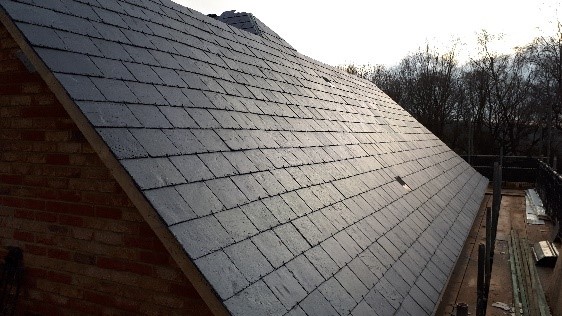
“it’s easier and makes for a better job. The hook holds the slate down tighter, looks neater and repairs are easier, you can’t re-nail a slate.”
Hooking slate is the method for design flexibility and roof pitches down to 25 degrees.
The design of a roof determines, to an extent, the shape and size of the slates to be used and features like curves, swept valleys, cones and domes, require the use of narrow slates. A nailed slate needs a 25mm margin between its hole and the longitudinal edge which restricts their width to a minimum of 150mm, but hook fixing allows smaller slates just 100mm to be used.
Cupa advise that when fixing slates with hooks all perimeter slates should be hook fixed and nailed. Slates for hook fixing are, of course, supplied unholed.
CUPA Slate’s the natural choice for quality and traceability
The CUPA quarries are in north western Spain, a region famous worldwide as a source of this raw material. They have a reputation for the finest natural slates at affordable prices and having used the best, our roofing customers forget the rest! As Guy Regan explained he “nearly always uses Cupa slate, it’s a quality slate for the price”.

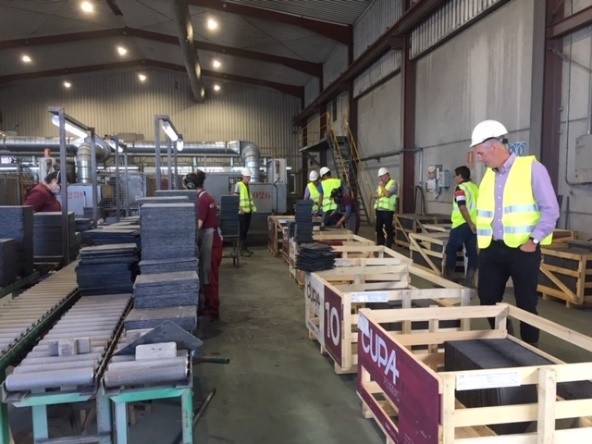
BRM staff make regular trips to the CUPA PIZARRAS quarries for technical product training. We’ve seen first-hand the unique bar code, quality control system CUPA employs which follows the slate through the production process and allows the identification of the origin, type technical data and even the date the slate was produced for each individual slate.
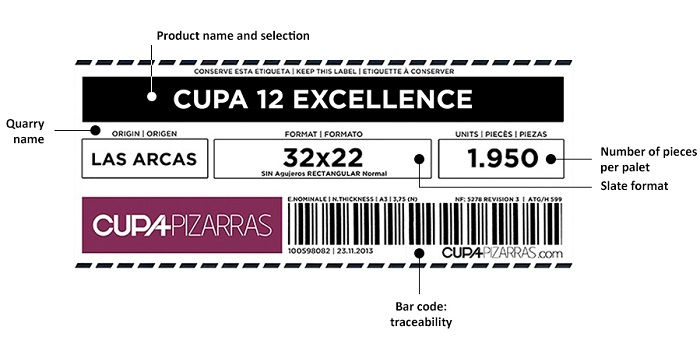
Our sales team can offer specialist advice and our range of slate ensures an aesthetically pleasing and structurally perfect roof. For advice on the right slate for your next roof please get in touch.
